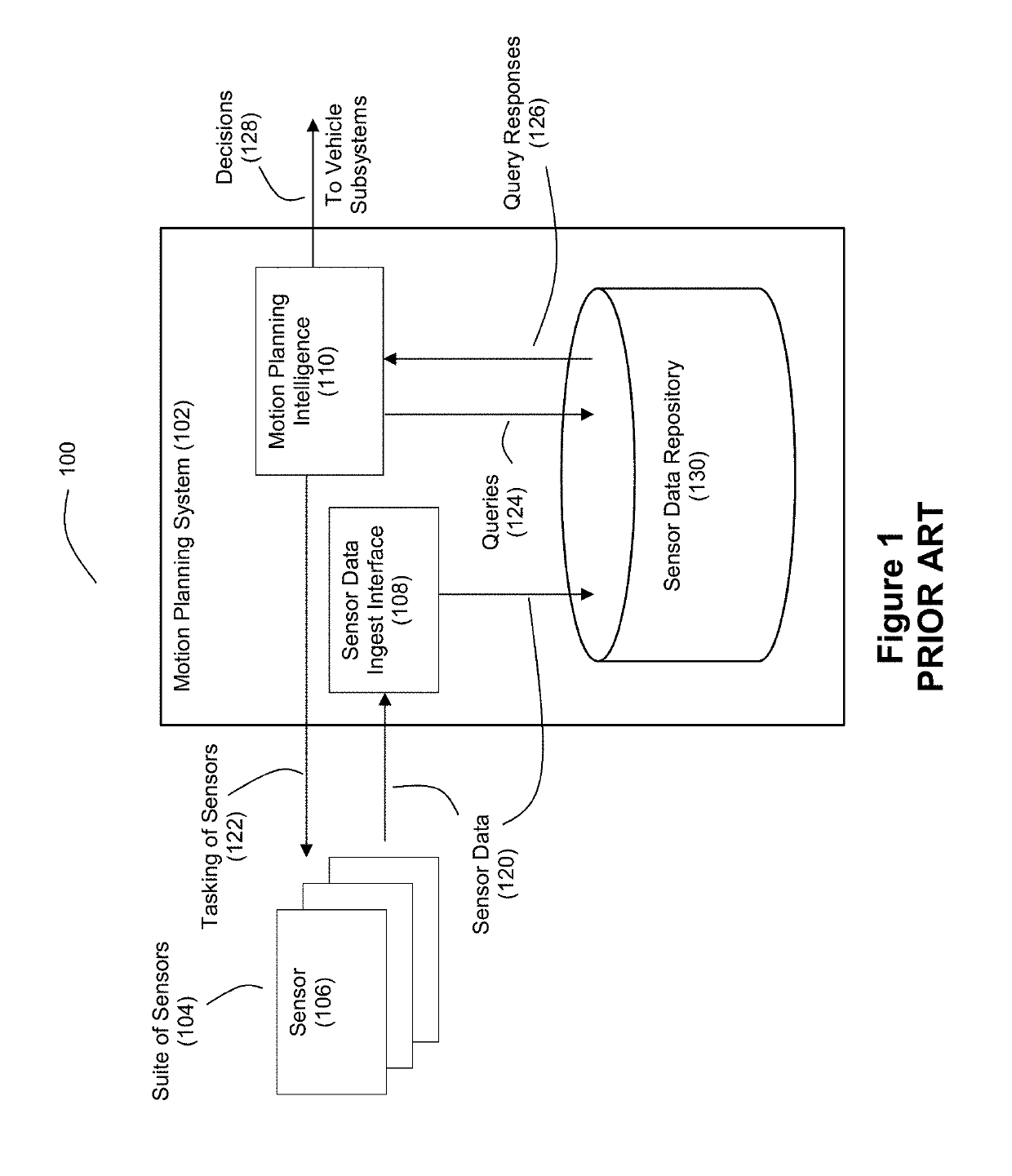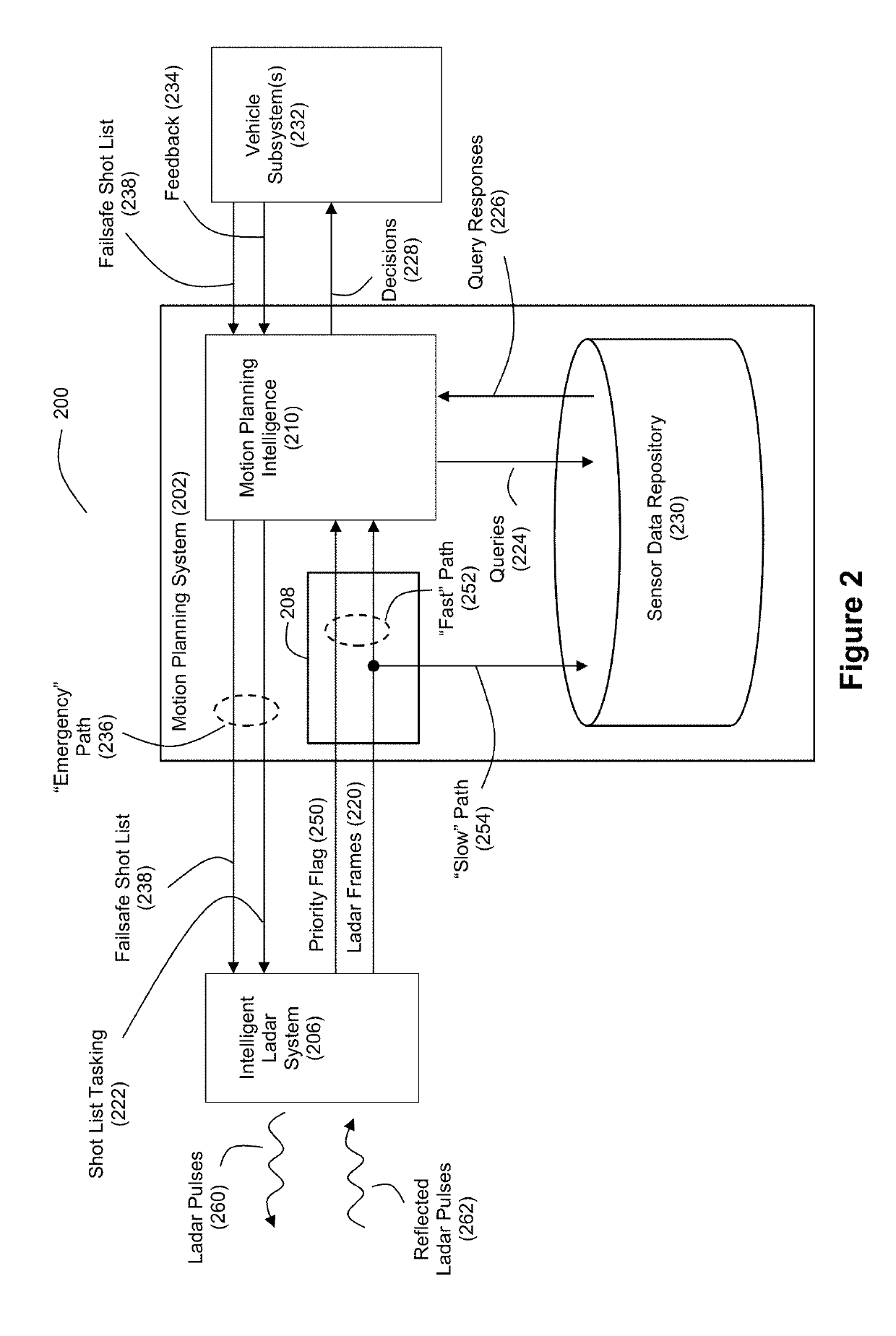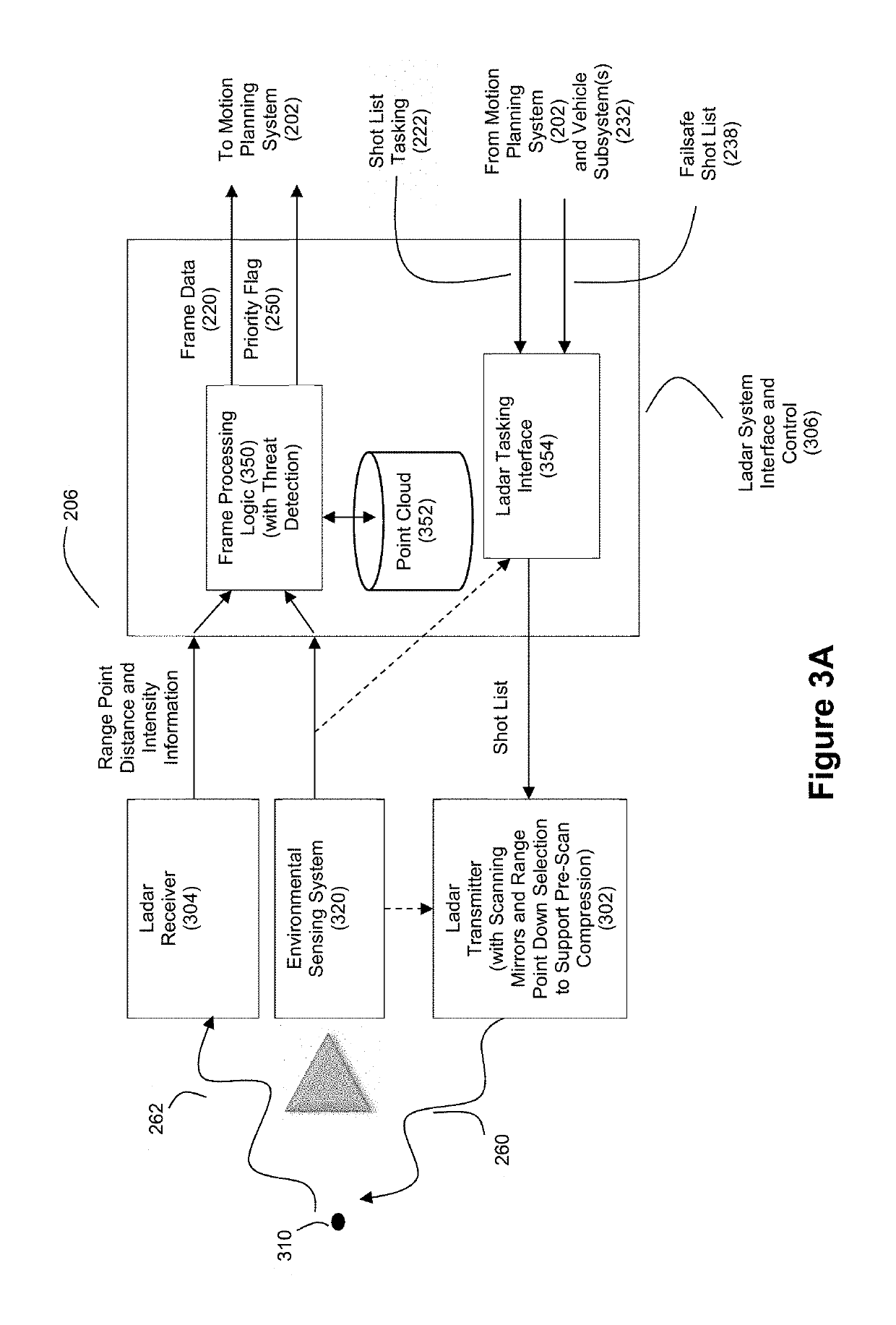Intelligent ladar system with low latency motion planning updates
a technology of intelligent ladars and motion planning updates, applied in the direction of condensers, complex mathematical operations, instruments, etc., can solve problems such as motion decision-making delays
- Summary
- Abstract
- Description
- Claims
- Application Information
AI Technical Summary
Benefits of technology
Problems solved by technology
Method used
Image
Examples
Embodiment Construction
[0031]FIG. 2 discloses an example system 200 for vehicle autonomy with respect to motion planning. In this example, the motion planning system 202 interacts with a sensor such as an intelligent ladar system 206 in a manner where the intelligent ladar system 206 is able to provide fast path notifications regarding detected threats. Unlike the conventional master-slave hierarchical relationship between a motion planning system and sensor, the example embodiment of FIG. 2 employs a collaborative model of decision-making as between an intelligent ladar system 206 and the motion planning system 202, whereby some of the intelligence regarding object and anomaly detection is positioned in the intelligent ladar system 206. Also, it should be understood that the system 200 may include sensors other than intelligent ladar system 206 that provide information to the motion planning system 202 (e.g., one or more cameras, one or more radars, one or more acoustic sensors, one or more vehicle telem...
PUM
 Login to View More
Login to View More Abstract
Description
Claims
Application Information
 Login to View More
Login to View More - R&D
- Intellectual Property
- Life Sciences
- Materials
- Tech Scout
- Unparalleled Data Quality
- Higher Quality Content
- 60% Fewer Hallucinations
Browse by: Latest US Patents, China's latest patents, Technical Efficacy Thesaurus, Application Domain, Technology Topic, Popular Technical Reports.
© 2025 PatSnap. All rights reserved.Legal|Privacy policy|Modern Slavery Act Transparency Statement|Sitemap|About US| Contact US: help@patsnap.com



